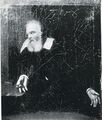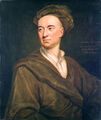Template:Selected anniversaries/February 26: Difference between revisions
No edit summary |
No edit summary |
||
| Line 22: | Line 22: | ||
||1857: Émile Coué born ... psychologist and pharmacist. He introduced a popular method of psychotherapy and self-improvement based on optimistic autosuggestion. Pic. | ||1857: Émile Coué born ... psychologist and pharmacist. He introduced a popular method of psychotherapy and self-improvement based on optimistic autosuggestion. Pic. | ||
||1878: | File:Angelo_Secchi.jpg|link=Angelo Secchi (nonfiction)|1878: Astronomer and Jesuit priest [[Angelo Secchi (nonfiction)|Angelo Secchi]] dies. Secchi was a pioneer in astronomical spectroscopy, and was one of the first scientists to state authoritatively that the Sun is a star. | ||
||1880: Kenneth Edgeworth born ... astronomer. Edgeworth is best known for proposing the existence of a disc of bodies beyond the orbit of Neptune in the 1930s- observations later confirmed the existence of the Edgeworth-Kuiper belt in 1992. Today those distant solar system bodies including Pluto, Eris, and Makemake, are grouped into the Edgeworth-Kuiper belt, or Kuiper belt. Pic. | ||1880: Kenneth Edgeworth born ... astronomer. Edgeworth is best known for proposing the existence of a disc of bodies beyond the orbit of Neptune in the 1930s- observations later confirmed the existence of the Edgeworth-Kuiper belt in 1992. Today those distant solar system bodies including Pluto, Eris, and Makemake, are grouped into the Edgeworth-Kuiper belt, or Kuiper belt. Pic. | ||
| Line 61: | Line 61: | ||
||2016: Petr Hájek dies ... scientist in the area of mathematical logic and a professor of mathematics. Pic. | ||2016: Petr Hájek dies ... scientist in the area of mathematical logic and a professor of mathematics. Pic. | ||
File:Enter_or_Exit_midsize_sketch.jpg|2017: Steganographic analysis of "Enter or Exit" sequence from ''[[Table Manners]]'' unexpectedly reveals "at least a terabyte of encrypted data." | |||
||2017: Ludvig Faddeev dies ... theoretical physicist and mathematician. He is known for the discovery of the Faddeev equations in the theory of the quantum mechanical three-body problem and for the development of path integral methods in the quantization of non-abelian gauge field theories, including the introduction (with Victor Popov) of Faddeev–Popov ghosts. Pic. | ||2017: Ludvig Faddeev dies ... theoretical physicist and mathematician. He is known for the discovery of the Faddeev equations in the theory of the quantum mechanical three-body problem and for the development of path integral methods in the quantization of non-abelian gauge field theories, including the introduction (with Victor Popov) of Faddeev–Popov ghosts. Pic. | ||
</gallery> | </gallery> | ||
Revision as of 17:20, 26 February 2020
1616: Physicist and engineer Galileo Galilei is formally banned by the Roman Catholic Church from teaching or defending the view that the earth orbits the sun.
1638: Mathematician and linguist Claude Gaspard Bachet de Méziriac dies. He was the earliest writer who discussed the solution of indeterminate equations by means of continued fractions. He also did work in number theory and found a method of constructing magic squares.
1692: Polymath John Arbuthnot discovers new class of Gnomon algorithm functions which rewrite documentary manuscripts using satirical premises, anticipating high-energy literature experiments of the late 1880s.
1786: Mathematician and politician François Arago born. He will observe that a rotating plate of copper tends to communicate its motion to a magnetic needle suspended over it, an effect which will later be known as eddy current.
1878: Astronomer and Jesuit priest Angelo Secchi dies. Secchi was a pioneer in astronomical spectroscopy, and was one of the first scientists to state authoritatively that the Sun is a star.
2005: Computer scientist Jef Raskin dies. He was a human–computer interface expert best known for conceiving and starting the Macintosh project for Apple in the late 1970s.
2017: Steganographic analysis of "Enter or Exit" sequence from Table Manners unexpectedly reveals "at least a terabyte of encrypted data."






